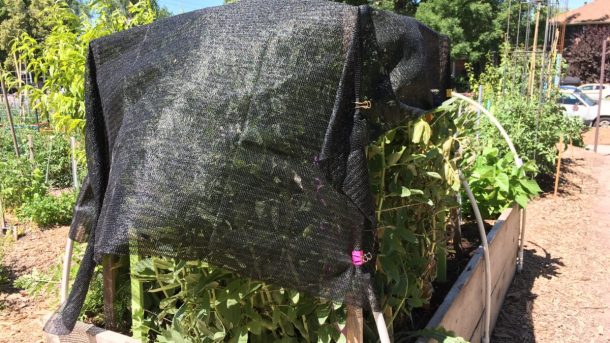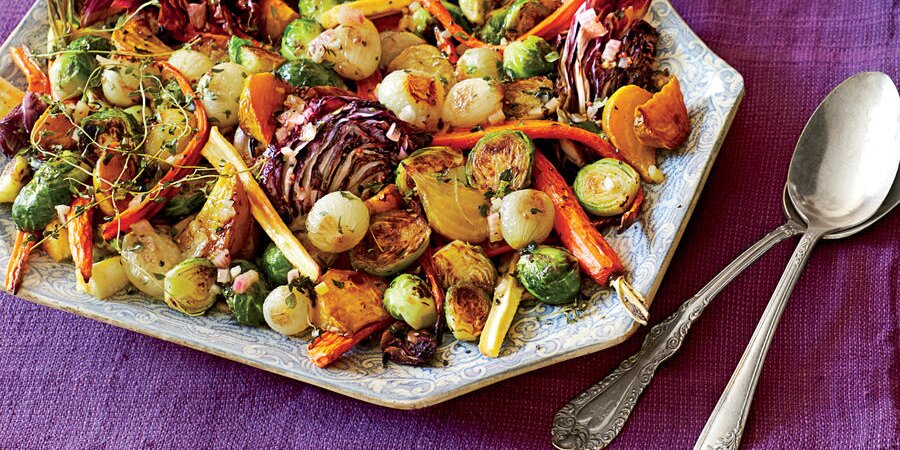It’s been a pretty tough gardening season so far for gardeners in Utah County. We’ve had occasional days of lovely weather sandwiched between nights that brought chilling injuries, days of extreme heat and a few late frosts. The seeds for warm season crops have struggles to germinate and mid-May transplants in the garden have often suffered chilling injury.
The cold weather should be behind us now. Instead of cold temperatures, it looks like gardeners will be dealing with some extreme heat this summer, bringing a different set of challenges. Every plant species has heat tolerance limits. When temperatures exceed those limits, plant growth can pause, flowers can fail to set fruit because pollen has been damaged, flavor can be affected, and the storage life of produce can decline.
We can’t do much about the weather, but we can do a few things to help our vegetables and flowers make it through the heat.
Use shade cloth over your sensitive plants, especially tomatoes and peppers. Shade cloth can also extend the harvest of spring planted lettuce into the early weeks of summer. Shade cloth is available in different densities that describe the amount of sunlight the cloth will block. For example, a 20% shade cloth will block 20% of the sunlight. Choose 30% shade to provide a few degrees of protection while also letting through enough light for good plant growth. As a bonus, shade cloth will also protect tomato and pepper fruits from sunscald. Instead of letting the cloth rest directly on your plants, support the cloth high enough above your crops to permit some air circulation so that heat doesn’t build up under the cloth. Hoops for row cover and shade cloth can be purchased, or you can easily improvise hoops and other supports with materials you probably have on hand.
Provide a wind break to protect your veggies and flowers from hot afternoon winds if you garden where afternoon winds are the norm. Trees are a common windbreak, but you can do the same thing in a garden with vertical shade cloth. Use 50% or higher shade cloth, supported vertically on posts or poles for protection from hot winds.
Mulch your soil. We’ve talked about the benefits of mulch for water conservation in the landscape, but most mulches can also cool the soil. Compost, grass clippings, shredded leaves, newspaper, and similar materials are good choices for vegetable gardens and annual flower beds because they can simply be turned under at the end of the season. For trees, shrubs and perennial flower beds, bark nuggets, shredded bark, or other organic options are the best choice because they don’t heat up or hold on to heat as easily as rock or gravel mulch.
Water deeply, but not too frequently. This will encourage deeper rooting of your flowers and vegetables. Deep, infrequent watering is very doable when you’re shading the soil with mulch. Make sure drip emitters are place under the mulch so that all the water you apply reaches the soil instead of being soaked up by the mulch. Water early in the morning if you can, so that flowers and vegetables are well-hydrated and soils are cooled before the heat of the day.
Get the best quality from your fruits, vegetables and cut flowers by harvesting in the morning when temperatures are cool. Bring your produce and flowers indoors as soon as possible to keep them cool and preserve their quality.
I have aphids… I get them every year…. I usually spray them with a spray but this year there are lady bugs trying to help…I have also backed up the spray with a root systemic…. I don’t want to harm the lady bugs but the aphids look like they are winning. What can I use to get rid of the bugs but not the lady bugs?
A systemic insecticide can help to protect plants from hungry insects without targeting beneficial insects, if applied properly. When did you apply the systemic to the soil at the base of the shrub? Systemic soil drenches or granules need to be applied with enough time to move through the root system up into the plant before insect pests arrive, usually in very early spring.
Doing a delayed dormant oil spray on all your trees and shrubs when the buds begin to swell can reduce the aphid population in your landscape by suffocating overwintering aphid eggs. When aphids, mites and other insects appear after that time, you can protect beneficial insects by using strong sprays of water or insecticidal soap. Either is safer for pollinators or lady beetle adults but may affect some larvae.
What kind of insecticidal soap should I use?
Purchase a product made specifically for use on plants and avoid the temptation to make your own with items you have available in your kitchen. There are several different brands of Insecticidal soap for sale, and they are all very similar. Garden Safe, Safer, Bonide and Natria are just four of the many brands you can find locally in garden centers.
Any kind of spray with an oil or soap ingredient can scorch plant leaves if the spray is still wet when there are high temperatures, so apply insecticidal soap in the very early morning or in the evening to give the spray enough time dry before the daytime temperatures are high.
Join thousands already receiving our daily newsletter.
Copyright © Daily Herald | www.heraldextra.com | 1200 Towne Centre Blvd. STE 1058, Provo, UT 84601
Garden Help Desk: Helping vegetable and flower gardens through the heat – Daily Herald




